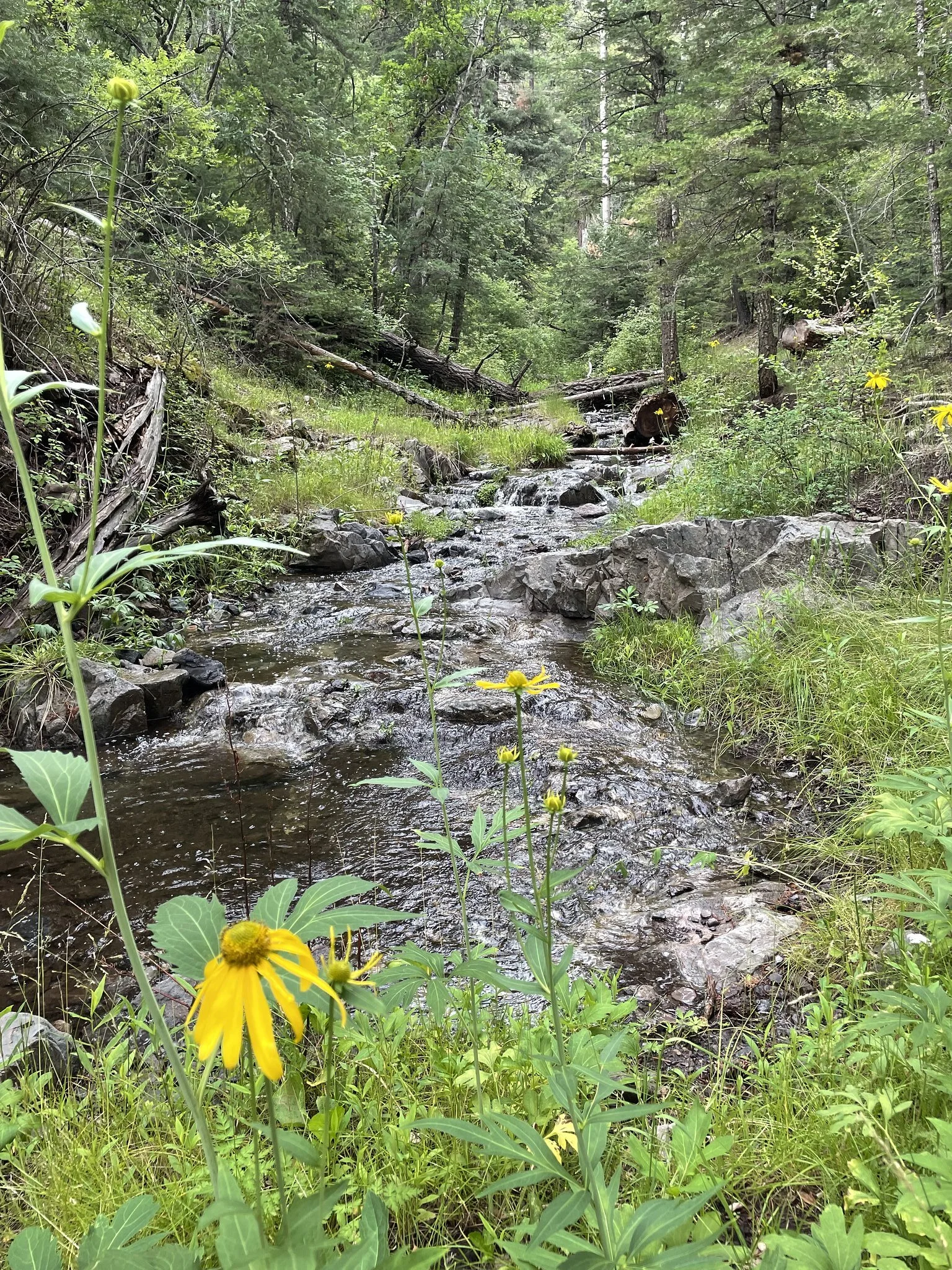
Lincoln National Forest Land Management Plan Revision and Environmental Impact Statement
Water
What we heard from the public:
Ensure water quality and clean drinking water
We strongly support a thoughtful, strategic approach to improving public access to the forest, restoring water quality and aquatic habitats by addressing the negative impacts of roads, and reconnecting wildlife habitat as a way to improve forest resiliency.
Forest road networks have been shown to have detrimental effects on water and aquatic resources in forested landscapes.
There is a need to recognize the importance of grazing permit holders' water development projects as a benefit to wildlife for water access. Hunting and wildlife viewing in the Lincoln National Forest would not be as significant were it not for privately developed water rights and infrastructure.
Draft EIS Alternatives
Alternative A: No plan objective.
Alternatives B, C, and E: Improve Watershed Condition Framework (WCF) score for 2 watersheds.
Alternative D: Improve the WCF score for 6 watersheds.
Stream in the White Mountain Wilderness—the Lincoln National Forest helps provide drinking water for the Village of Ruidoso and City of Alamogordo
Draft Land Management Components
Water Resources Desired Conditions
Watersheds are functioning properly and:
Provide for high biotic integrity (habitats that support adaptive plant and animal communities);
Are resilient to natural and human-caused disturbances such as wildfire and climate fluctuations;
Exhibits connectivity;
Maintain long-term soil productivity; and
Provide a wide range of sustainable ecosystem (for example, provisioning service such as clean water and cultural services like recreation).
Most watersheds support multiple uses (such as timber, recreation, grazing) with no long-term decline in ecological conditions, although some watersheds are set aside to preserve ecological function and may support more limited uses (for example, municipal watersheds).
Water quality across the Lincoln National Forest meets or exceeds State of New Mexico water quality standards.
There is continuous exchange of water between the stream channel, the adjacent riparian management zone, and the underlying groundwater. Through these processes, sediment and organic debris is efficiently filtered, transported, and stored. Additionally, floodplains are developed and maintained to withstand high-flow events, improve floodwater retention, and provide efficient water holding capacity for stream base flow and groundwater recharge.
The flow regime (magnitude, timing, duration, frequency, and rate of change) of streams is sustained at levels that maintain or enhance essential ecological functions including channel and floodplain morphology, groundwater recharge, water quality, nutrient cycling, and stream temperature regulation.
Channel type (width/depth ratio, sinuosity, gradient, etc.) is appropriate for the landscape setting (landform, geology, bioclimatic region, etc.). Stream channels are vertically and laterally stable and resist headcutting and gullying.
Aquatic habitats are connected and free from alterations (such as temperature regime changes, lack of adequate streamflow, or barriers to aquatic organism passage) to allow for species migration, connectivity of fragmented populations, and genetic exchange. Barriers to movement are located where necessary to protect native fish from nonnative species.
Stream alterations (such as culverts and water crossings) do not exclude aquatic species from their historical habitat or restrict seasonal and opportunistic movements. Barriers to movement may exist to protect native aquatic species from nonnative aquatic species.
View of a lake in the Lincoln National Forest
Rocky Mountain elk
Water Resources Objectives
Improve the WCF score for at least two watersheds over the life of the plan.
Restore or enhance at least 20 acres of wetlands over 10 years.
Water Resources Standards
Project planning documents must include best management practices to minimize management impacts to maintain water quality or prevent degradation of water resources (for example, National Core Technical Guide for Best Management Practices, FS-990A; FSH 2509.22 – Soil and Water Conservation Practices Handbook; Best Management Practices for Water Quality Management on National Forest System Lands; Volume 1: National Core BMP Technical Guide; USDA Forest Service, April 2012; or other best management practices guidance).
Water Resources Guidelines
New and reauthorized (permits, environmental analyses including Section 18 reviews, etc.) management activities should not cause departure from desired conditions.
To encourage natural channel morphology on perennial and intermittent streams, new or redesigned stream crossings (such as bridges and culverts) should be wide enough to successfully pass water, sediment, wood, and aquatic organisms.
Measures should be taken to eliminate the risk of introducing new or spreading existing invasive species and pathogens to streams, riparian areas, or wetland ecosystem.
Where known, groundwater recharge areas should be protected or restored to maintain water quality and quantity (discharge).
Next Station: Transportation and Access
For more information on the project or to be added to the mailing list, please contact Diane Prather at (575-649-9405) or diane.prather@usda.gov.




